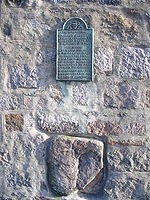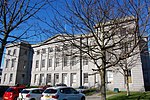St Mary's Cathedral, Aberdeen
19th-century Roman Catholic church buildings in the United KingdomAberdeen stubsCategory B listed buildings in AberdeenChurches in AberdeenEurope Roman Catholic cathedral stubs ... and 6 more
Listed cathedrals in ScotlandRoman Catholic cathedrals in ScotlandRoman Catholic churches completed in 1860Scottish church stubsUnited Kingdom Roman Catholic church stubsUse British English from December 2017

The Cathedral Church of St Mary of the Assumption, usually known as St Mary's Cathedral, is a cathedral of the Roman Catholic Church in the city of Aberdeen, Scotland. It is the home of the see of the Bishop of Aberdeen, who is the ordinary of the Diocese of Aberdeen in the Province of St Andrews & Edinburgh. It stands at 20 Huntly Street in Aberdeen.
Excerpt from the Wikipedia article St Mary's Cathedral, Aberdeen (License: CC BY-SA 3.0, Authors, Images).St Mary's Cathedral, Aberdeen
Huntly Street, Aberdeen City City Centre
Geographical coordinates (GPS) Address Website External links Nearby Places Show on map
Geographical coordinates (GPS)
| Latitude | Longitude |
|---|---|
| N 57.1454 ° | E -2.1064 ° |
Address
Cathedral of St Mary of the Assumption (St Mary's Cathedral)
Huntly Street
AB10 1SH Aberdeen City, City Centre
Scotland, United Kingdom
Open on Google Maps









